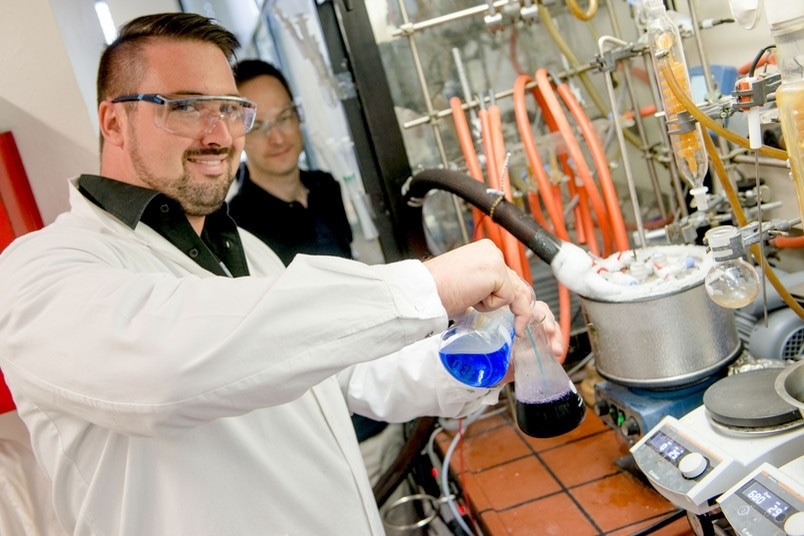Jul 18 2017
A new approach for activating chemical reactions based on the element selenium has been tested by Chemists at Ruhr-Universität Bochum. These Chemists demonstrated that selenium is capable of developing bonds similar to those of hydrogen bonds, leading to accelerated reactions.
The exact mechanism has been described by the team at the Chair of Organic Chemistry 1 in Bochum, including Prof Dr Stefan Huber and Patrick Wonner, in the journal “Angewandte Chemie”, in association with Prof Dr Daniel Werz from Braunschweig University of Technology.
 Patrick Wonner and Stefan Huber have transferred the principle of the hydrogen bond to other elements. (C) RUB, Marquard
Patrick Wonner and Stefan Huber have transferred the principle of the hydrogen bond to other elements. (C) RUB, Marquard
Metal complexes are traditionally used as catalysts and activators. They produce complete covalent bonds with the molecule whose reactions they are expected to accelerate. However, the metals are often toxic or expensive.
Weaker bonds suffice
Over recent years, it has been proved that a covalent bond is not absolutely necessary for catalysis or activation. Weaker bonds, such as hydrogen bonds, could be sufficient. Here, the bond develops between the negatively polarized center of another molecule and a positively polarized hydrogen atom. In the similar way as hydrogen, elements belonging to group 17 in the periodic table, namely halogens such as iodine, bromide and chlorine, can produce weak bonds and thus serve as catalysts or activators.
This principle was transferred to elements from group 16 of the periodic table, i.e. chalcogens, by Stefan Huber’s team. Compounds with a positively polarized selenium atom were used by these Researchers. This atom produces a weak bond to the substrate of the reaction, resulting in the transformation which was accelerated by 20 to 30 times.
The Chemists, for comparison purposes, also tested compounds in which they used another element to replace the selenium center. Molecules without selenium failed to accelerate the reaction.
Consequently, the observed effect can be clearly attributed to selenium as active center.
Prof Dr Stefan Huber
Better than sulfur
Only one comparable case of chalcogen catalysis had developed in earlier studies; sulfur was used there instead of selenium.
As selenium can be polarized more easily than sulfur, it has greater potential as a catalyst component in the long term. In combination with halogen bonds, chalcogen bonds have added two fascinating mechanism to the chemists’ repertoire, for which there is no known equivalent in nature, for example in enzymes.
Prof Dr Stefan Huber
The team next plans to prove the possibility of using selenium compounds as adequate catalysts. The Researchers presently refer to them as activators, as comparatively large amounts of the substance are needed in order to activate the reaction. This is because the term catalyst can be used only after the amount of the required selenium compounds is smaller than the quantity of the starting materials needed for the reaction.